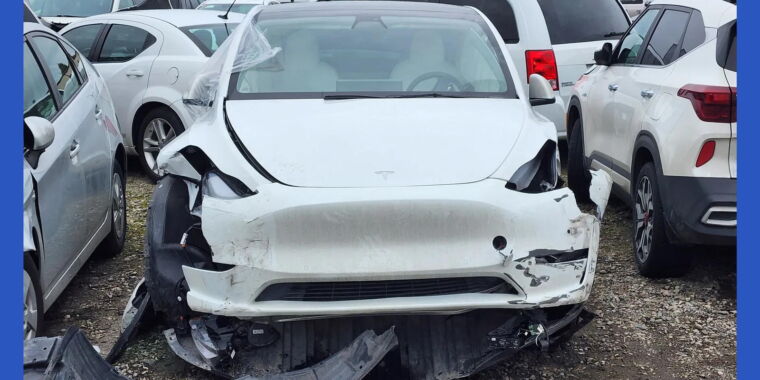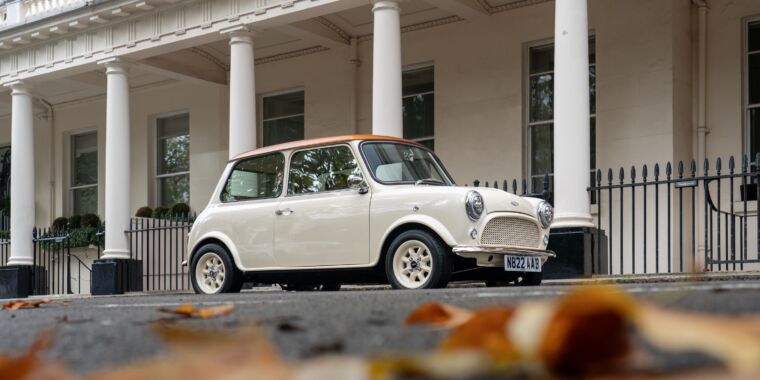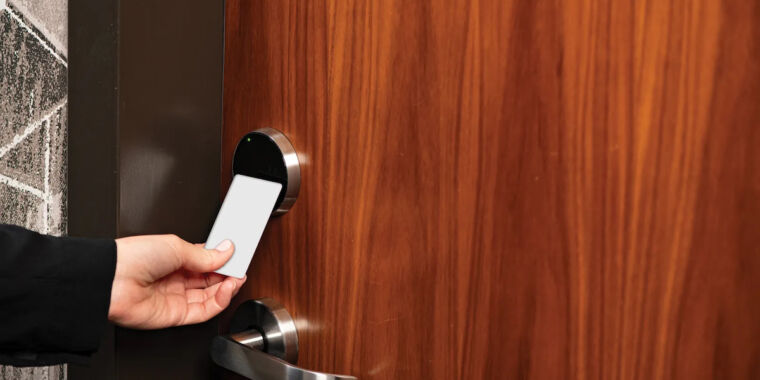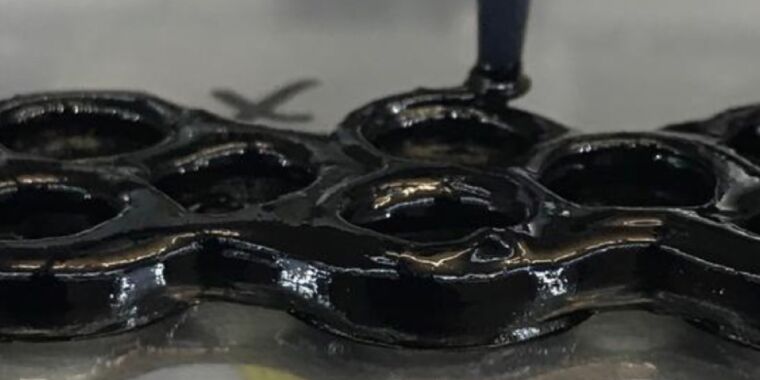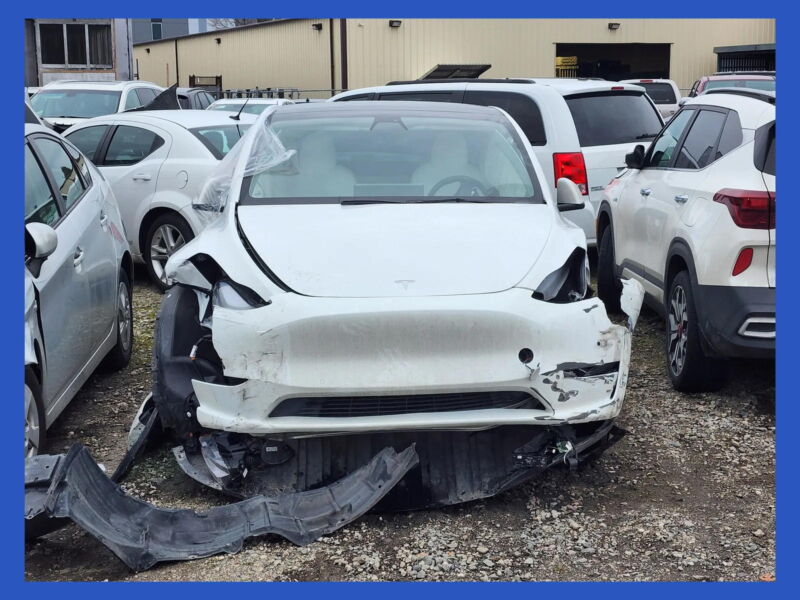
Courtesy of Max
This summer, a Vancouver car mechanic named Max got a perplexing ping on his phone: Betty White was in Ukraine and needed his help. This was surprising because she had died on a Canadian highway back in January.
When Max last saw Betty White, his nickname for his Tesla Model Y Performance, they were both in rough shape after getting sideswiped on the highway. Max’s rotator cuff was torn in several places. The small SUV had bounced off multiple concrete barriers at high speed and was bashed in on all four corners, its wheels ripped to pieces. Coolant appeared to be leaking into the battery chamber. From his own work on EVs in the garage, Max knew that Betty was done for. “No auto shop would put a repair person at risk with that kind of damage,” says Max, whose last name isn’t being used out of doxing concerns. A damaged EV battery can become dangerous due to the risk of shocks, fire, and toxic fumes. His insurer agreed, and Betty was written off and sent to a salvage yard.

Months after he had last seen the car, Max’s Tesla app was now telling him that Betty needed a software update. It showed the car with an extra 200 kilometers on the odometer, fully charged, and parked in Uman, a town in Ukraine’s Cherkasy Oblast, midway between Kyiv and the front line with Russia’s invasion force. Minutes after that first ping, the app showed the car in service mode, suggesting Betty was undergoing repairs. “I thought it must be a mistake,” Max says.
There was no mistake. WIRED tracked Betty down to a Ukrainian auto auction website, looking good as new, maybe even better, with newly tinted windows and rearview mirrors wrapped in black. Betty 2.0 was being sold by “Mikhailo,” who wrote that the car had suffered “a small blow” in Canada and been repaired with original Tesla parts. The price, $55,000, was roughly the same as a new Model Y Performance costs in the US.
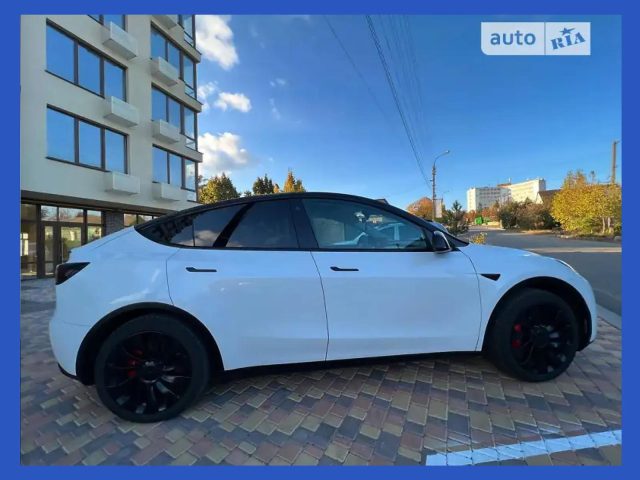
Courtesy of Max
Betty White’s intercontinental resurrection was impressive but not unusual. For a long time, cars written off in North America have found their way to Eastern European repair shops willing to take on damage that US and Canadian mechanics won’t touch. In 2021, the most recent data available, Ukraine was a top-three destination for used US passenger vehicles sent overseas, close behind Nigeria and the United Arab Emirates. And Ukraine’s wreck importers and repairers are particularly known for their ingenuity. Some have made fixing EVs written off across the Atlantic into a specialty, helping to drive a surge in the number of electric vehicles on the country’s roads, even as the war with Russia rages.
Though few automakers sell new EVs in Ukraine, the share of newly registered vehicles that are fully electric, 9 percent, is about the same as in the US and nearly double that of neighboring Poland and the Czech Republic. Most of Ukraine’s refurbished EVs come from North America, and many arrive with major damage.
There’s a ready supply of crashed North American EVs in part because electrics are becoming more common, and also because in recent years, relatively new EVs with low mileage have been written off at a higher rate than their gas-powered equivalents, according to data from insurers. US and Canadian repair shops and insurers see them as more dangerous and difficult to fix. Scrapyards find it hard to make money from their parts and instead ship them abroad.
A hundred Teslas per month
Ivan Malakhovsky is not afraid to work on cases like Betty White. His 5-year-old repair business in Dnipro, in eastern Ukraine, fixes about 100 Teslas a month, roughly a fifth of them from overseas, and employs a staff that varies between six to 10 people. He’s currently away from home, serving with the Armed Forces of Ukraine, but he manages his workers, and sometimes makes software-mediated repairs, remotely. “We have problems in our lives and can fix them, whether a battery or a full-scale invasion,” says Malakhovsky. “Electric cars, electric car batteries—it’s no problem.”
An electric vehicle battery is made up of thousands of individual cells, which store and release energy. Sometimes, Malakhovsky says, he and his coworkers will break up large EV batteries damaged beyond repair and repurpose the cells to power electric scooters or even drones for the war effort. He says the vast majority of Teslas on Ukrainian roads were once involved in wrecks in North America.
The war has even boosted Ukraine’s EV resurrection business at times, by driving up gas prices and making electrics more attractive to drivers. Ukraine has a public charging network of some 11,000 chargers, according to Volodymyr Ivanov, the head of communications at Nissan Motor Ukraine—that’s more than the state of New York, and double the number in neighboring Poland. Since 2018, Ukraine’s government has removed most taxes and customs duties on used EV imports. In the US, electric vehicles tend to be expensive, and the average EV driver is still a high-income male homeowner. North American wrecks, Ukraine’s EV incentives, and its relatively low electricity prices have created a different picture.
“There is a joke here that all poor people are driving electric cars, and all the rich people are driving petrol cars,” says Malakhovsky. “Tesla is a common-people, popular car because it’s very cheap in maintenance.”
That’s a relatively recent development, says Hans Eric Melin, head of Circular Energy Storage, a UK-based consultancy that tracks the international flows of used EVs and batteries. He began watching the Ukraine market in particular a few years ago, after he noticed more ads for Nissan Leafs on auction sites listed in Ukrainian than in English. At the time, the Leaf, a pioneer among EVs, was essentially the only one that had been around long enough to develop a healthy used market. Over time, Ukraine’s electric fleet grew to encompass the full range of EVs sold around the world, including Teslas, as more cars hit the roads and aged or got into crashes.
Melin had suspected Ukraine’s EV boom would end with the war. “I was completely wrong,” he says. By this summer, Ukraine’s EV fleet had doubled since July 2021, to 64,312, according to data compiled by the Automotive Market Research Institute, a Ukrainian research and advocacy group.

